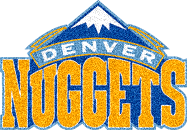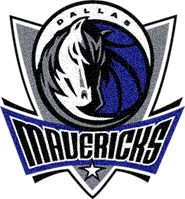DETROIT PISTONS QUALITY
Rasheed Wallace, C 1.070
Richard Hamilton, SG 0.874
Antonio McDyess, PF 0.712
Rodney Stuckey, PG 0.597
Walter Herrmann, PF 0.512
Allen Iverson, SG 0.411
Tayshaun Prince, SF 0.395
Arron Afflalo, SG -0.042
WASHINGTON WIZARDS QUALITY
Juan Dixon, SG 1.379
Caron Butler, SF 1.113
Dominic McGuire, PF 1.073
Nick Young, SG 0.891
Andray Blatche, PF 0.742
Antawn Jamison, PF 0.692
Darius Songaila, PF 0.632
Antonio Daniels, PG 0.388
DeShawn Stevenson, SG 0.033
SCALE FOR RPR (QUALITY) RATINGS FOR A SINGLE GAME
Historic Superstar for this game 1.400 and more
Superstar 1.050 to 1.399
Star 0.800 to 1.050
Very Good 0.650 to 0.799
Major Role Player 0.525 to 0.649
Role Player 0.450 to 0.524
Minor Role Player 0.400 to 0.449
Very Minor Role Player or Very Important Defender 0.350 to 0.399
Poor Game or Extremely Importand Defender 0.275 to 0.349
Very Poor Game Regardless of Defending 0.200 to 0.274
Disaster Game Regardless of Defending minus infinity to 0.199
****************************************************
REAL PLAYER PRODUCTION (QUANTITY) IN THIS GAME
DETROIT PISTONS QUANTITY
Richard Hamilton, SG 33.20
Rasheed Wallace, C 28.90
Rodney Stuckey, PG 21.50
Antonio McDyess, PF 17.80
Tayshaun Prince, SF 15.80
Allen Iverson, SG 15.60
Walter Herrmann, PF 6.65
Arron Afflalo, SG -0.75
WASHINGTON WIZARDS QUANTITY
Caron Butler, SF 45.65
Juan Dixon, SG 33.10
Antawn Jamison, PF 27.00
Darius Songaila, PF 17.70
Nick Young, SG 15.15
Dominic McGuire, PF 13.95
Andray Blatche, PF 13.35
Antonio Daniels, PG 6.20
DeShawn Stevenson, SG 1.10
SCALE FOR RPP (QUANTITY) RATINGS FOR A SINGLE GAME
FOR STARTING PLAYERS
Only Some Players Can Ever Fly This High, but Not Very Often! 40.0 and more
Massive and Memorable Game 36.0 to 39.9
Huge Game 32.0 to 35.9
Very Big Game 28.0 to 31.9
Big Game 24.0 to 27.9
Typical Average Game 20.0 to 23.9
Somewhat Below Average Game 16.0 to 19.9
Way Below Average Game 12.0 to 15.9
Bad Game 9.0 to 11.9
Really Bad Game 5.0 to 8.9
Total Disaster minus infinity to 4.9
SCALE FOR RPP (QUANTITY) RATINGS FOR A SINGLE GAME
FOR NON-STARTING PLAYERS
Only Some Non-Starters Can Ever Fly This High, but Not Very Often! 33.0 and more
Massive and Memorable Game 29.0 to 32.9
Huge Game 25.0 to 28.9
Very Big Game 21.0 to 24.9
Big Game 17.0 to 20.9
Typical Non-Starter Game 12.0 to 16.9
Below Average Even For a Non-Starter 9.0 to 11.9
Way Below Average Even For a Non-Starter or Limited Minutes 6.0 to 8.9
Bad Game Even for a Non-Starter or Very Limited Minutes 3.0 to 5.9
Disaster: Nothing Much to Report minus infinity to 1.9
THE HIGHEST QUALITY PLAYERS IN THIS GAME

DETROIT PISTONS OUTSTANDING QUALITY GAME
Superstar during minutes on the court: Rasheed Wallace
Star during minutes on the court: Richard Hamilton
Very Good during minutes on the court: Antonio McDyess

WASHINGTON WIZARDS OUTSTANDING QUALITY GAMES
Superstar during minutes on the court: Juan Dixon
Superstar during minutes on the court: Caron Butler
Superstar during minutes on the court: Dominic McGuire
Star during minutes on the court: Nick Young
Star during minutes on the court: Andray Blatche
Very Good during minutes on the court: Antawn Jamison
Very Good during minutes on the court: Darius Songaila
THE GREATEST POWER PERFORMERS OF THIS GAME

DETROIT PISTONS POWER PERFORMERS
Huge Game: Richard Hamilton
Very Big Game: Rasheed Wallace
Big Game: Antonio McDyess

WASHINGTON WIZARDS POWER PERFORMERS
Only Some Players can Ever Fly This High, and Not Very Often: Caron Butler
Massive and Memorable Game: Juan Dixon
Very Big Game: Antawn Jamison
Big Game: Darius Songaila
USER GUIDE FOR THIS TYPE OF REPORT(Last updated December 8 2008)
EDITING AND PUBLISHING PLAN-MAIN DETAILS
This is a "just the important facts please, and give them to me quick" type of report. I will in some cases do a very limited amount of commentary at the bottom of this type of report, but it will really be just notes for commentary that will be elsewhere in the near future. In some cases there will be no comments at all.
Most of the commentaries I do are in "Game/Team/League Reports" and in Fast Breaks". Game/Team/League reports are, with any luck, going to be produced for about 20 Nuggets and for about 20 Pistons games this season. Ultimate Game Breakdowns: Players, such as the one here, will be done for those same games. Plus there will be about 10 more Nuggets and 10 more Pistons Game Breakdowns for games for which there will be no article report. There will be a few other "wildcard" Game Breakdowns.
So in total, at least 70 of these relatively easy to produce but very informative Ultimate Game Breakdown-Players reports are scheduled for the regular season. At least 40 Game/Team/League Reports are planned.
Ultimate Game Breakdown-Coaching reports are done for every game that has a Game/Team/League Report.
More of every type of report will come out during playoffs season; I won't bore you with those details.
The games that get the full treatment have been very carefully chosen to be the most important games, which are generally the games against the best teams. Full treatment including the kitchen sink report games have been chosen from among only games where neither team is at a disadvantage due to playing on back to back nights. Other internet basketball "experts" are really wasting their time to some extent when they report on a game where one team was playing on back to back nights and the other team was not, because the great majority of those games are almost automatically won by the team that has more rest. I used to do those stupid games, but I'm not doing them anymore, because I keep trying to get better and better at understanding and teaching basketball, so I make changes such as this.
ULTIMATE GAME BREAKDOWN--PLAYERS REPORT EXPLAINED
With an Ultimate Game Breakdown-Players report, you can see very rapidly who was most responsible for the winning or the losing of the game. Then someone like me can easily write a separate game report which explains how things might have worked out better for a team, or why things worked out just about as well as possible, as the case may be.
The Real Player Ratings formula has been very carefully and accurately tweaked again and is currently as follows:
POSITIVE FACTORS
Points 1.00 (at par)
Number of 3-Pt FGs Made 1.00
Number of 2-Pt FGs Made 0.60
Number of FTs Made 0.00
Assists 1.75
Offensive Rebounds 1.15
Defensive Rebounds 1.25
Blocks 1.60
Steals 2.15
NEGATIVE FACTORS
3-Pt FGs Missed -1.00
2-Pt FGs Missed -0.85
FTs Missed -0.85
Turnovers -2.00
Personal Fouls -0.80
ACTUAL COMBINED AWARD OR PENALTY BY TYPE OF SHOT
3-Pointer Made 4.00
2-Pointer Made 2.60
Free Throw Made 1.00
3-Pointer Missed -1.00
2-Pointer Missed -0.85
Free Throw Missed -0.85
ZERO POINTS: PERCENTAGES BELOW WHICH THERE IS A NEGATIVE NET RESULT
3-Pointer 0 score % 0.200
2-Pointer 0 score % 0.246
1-Pointer 0 score % 0.459
ASSISTS VERSUS TURNOVERS ZERO POINT
Assist/Turnover Ratio That Yields 0 Net Points: 1.143
QUALITY (RPR) AND QUANTITY (RPP)-AN EXPLANATION
RPR game reports show for each player the RPR (Real Player Rating) which tells you how good a player did (all the good things minus all the bad things) out on the court per unit of time. The RPP (Real Player Production) report tells you how much in total (the sum of the of the good things minus the sum of the bad things) a player did out on the court.
Many and maybe most sports watchers and an unknown but probably disturbingly large number of sports managers make the mistakes of exaggerating the importance of quantity and overlooking to some extent quality. These reports allow you to expand your horizons. These reports put quantity and quality side by side, which is extremely valuable, because both are roughly equally important in explaining accurately why and how the game turned out the way it did.
Players who over many games consistently have higher RPR (quality) but lower RPP (quantity) results are in many cases not getting enough playing time. Players that over many games consistently have lower RPR (quality) but higher RPP (quantity) results are in many cases getting too much playing time.
The exceptional cases are very often going to be players who are either truly outstanding defenders or truly bad defenders. This is because the one and only thing that is not counted, because it is impossible to calculate it, is the number of shots that a player prevents from being scores. Investigation has to date revealed that, apparently, no one has even attempted, for the NBA, rough estimates of the actual value of each player's defending, in terms of number or percentage of scores prevented, or in terms of number or percentage of possessions made worthless.
Over the coming year, I am going to be working to see if it is possible to use some combination of advanced statistics that are tracked on certain internet sites as an accurate proxy for the number of shots and/or for the number of possessions ruined by a defender.
Another exception. where it is really alright when it looks like a player is playing too much, will be if a team has a point guard who has many more turnovers than the average point guard has. Because the point guard is so important, a good coach has to play his best guard who can make plays at the position for a full set of minutes every game, pretty much regardless of how many turnovers that player makes. If you take out your designated point guard due to "too many turnovers," it's most often going to be sort of like cutting your foot off because you have a bad case of athletes foot!








